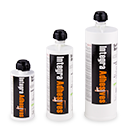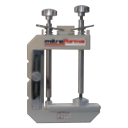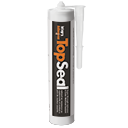Seaming Stone and Quartz with Surface Bonder Xi
Seam Preparation
1Cut a groove in the slab: Width: Ideally, 1 mm wider than the rod, but not more than 1.5 mm (1/16″) wider than the rod. Depth: The groove depth should hold the rod close to flush with the back surface of the slab. For 10 mm (3/8″) fibreglass rods, cut the groove 11 or 12 mm (7/16″) deep.
2The groove should be rinsed to remove sludge and blown dry for maximum strength. If it was dried using a torch, let the stone cool to room temperature before application of adhesive. If the stone is damp or wet, the strength of the reinforcement may be reduced. Rodding damp stone will generally produce approximately 50% strength compared to a dry application. (see product overview or technical data sheet for performance specifications)
3Insert a cartridge of RD50 into the dispenser, balance the components by pulling the trigger to make sure both components are flowing and then attach the static mixer. Purge a small amount of adhesive then fill the groove about half full. * It is preferable to apply the adhesive in two passes, one along each side of the groove. Wetting both surfaces will ensure adhesive contact on all sides of the rod and stone.
4Push the rod into the groove. Excess material can be wiped off with a squeegee or ground off the surface after it dries. If it is wiped off before drying, the glue will not cure level with the surface but this will not noticeably reduce the reinforcement strength.
5 Let the adhesive cure until set for (10 — 20 minutes) before turning the slab. * Based on room temperature of 20°C (70°F)




